Hi Calli,
Also Voyager 2 was considered to have had only a 12% chance of success at Uranus & only approx 1% chance of success at Neptune after the Saturn encounter. NASA though still approved the extention as engineers were quietly confident that with care, Voyager 2 could be reprogrammed & with better energy management, she could pull at least Uranus off successfully.
A quick resume below of what Voyager 2 showed us of the major moons of Uranus.
Puck. 162 KM wide. previously unknown, discovered during the approach by Voyager 2. The grainy image below (enlarged by me) reveals a somewhat out of round shape with a large crater. Puck looks a lot like a giant cometary nucleus.
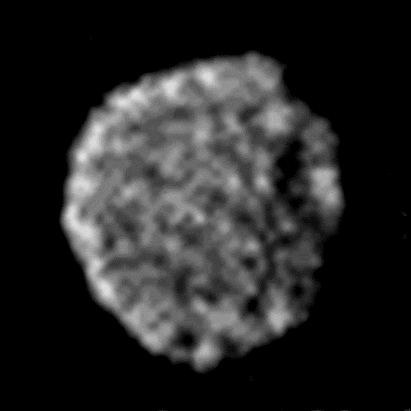
Uranus moon Miranda from Voyager 2. Which at 480 KM by 468 KM by 466 KM is highly geologically diverse. Either Miranda absorbed two former co-orbitals or was smashed & reassembled, with denser rock separating out forming a core with the ice 'warming' up in the process, creating the strange landscape, before refreezing. Huge cliffs, up to 16 KM high are seen & remain the highest known cliffs in the solar system.
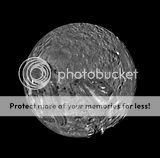


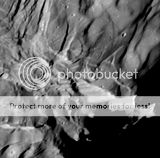
Uranus moon Ariel from Voyager 2. 1162 KM by 1156 KM by 1155 KM is just slightly larger than the Saturn moons Tethys & Dione. Unlike Tethys but like Dione, Ariel shows a history of geological activity including faulting & graben but unlike Dione, Ariel has tall mountains, mesas & channels running along the centre of some of the graben. Also many craters appear 'softened' like many of those on the Saturn moons Enceladus & Dione.
Ariel like the Saturn moons Enceladus & Dione & Jupter moon Europa appears to have 'rolled' i.e the heaviest cratered terrain is not on the leading hemisphere, as would be expected, as the heaviest cratered terrain is on the leading side meeting impactors head on. With Ariel, diapirs (columns of 'warmer' ice) rose through the mantle & repositioned the central mass of Ariel, with respect to Uranus, causing it to 'roll' into a new orientation.
The cause of the activity is not obvious, perhaps at some point, Ariel was in a more elliptical orbit around Uranus & experienced tidal heating as a result (a much reduced version of Jupiter's Io).However, the next moon out, Umbriel is primitive & unevolved, so makes that scenario appear less likely.




Uranus moon Umbriel. 1,170 KM across. Out of the five main moons of Uranus, Umbriel appears to be the most primitive & unevolved. Impact craters dominate, with a basin surrounding the bright impact crater at the top. Below, two images, the one on the right, highly contast enhanced.


The largest of the Uranian moons, Titania, which at 1,577 KM across is the largest mid sized moon in the solar system, just eeking ahead of the Saturn moon Rhea in size. Unlike Rhea, Titania clearly shows signs of geological activity in the past. Huge canyons are visible as is a smoother region. The canyons appear to be gigantic graben, when the crust cracked as the ice rich mantle froze & possibly rock settled out to form a core. Titania is much denser than Rhea too, appearing to be an approximate 50-50 ice to rock composition, where as Rhea is approx 90-10 ice to rock ratio.
Also unlike Rhea, Titania also appears to have brighter toned terrain on some slopes & on the walls of some of the graben. Perhaps frost???? Does Titania have an exosphere????
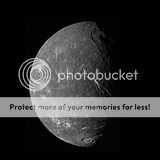
Finally but not least is Oberon. The second largest of the moons of Uranus at 1,523 KM across & the outermost of the large moons. Oberon is just slightly smaller than Saturn's Rhea, but unlike Rhea, Oberon displays evidence of geological activity. Oberon has a huge number of impact craters for sure, but the floors of many are dark possibly due to cryovolcanism, Oberon too has tall mountains & faulting.
Many craters also appear to have 'softened' much like many on the Saturn moons Enceladus & Dione, suggesting the crust has not always been brittle, i.e Oberon went through a 'warming' period. A huge shame, that Oberon could not be seen at the same level of detail as Miranda or Ariel.
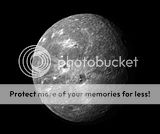

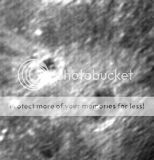

Andrew Brown.






























